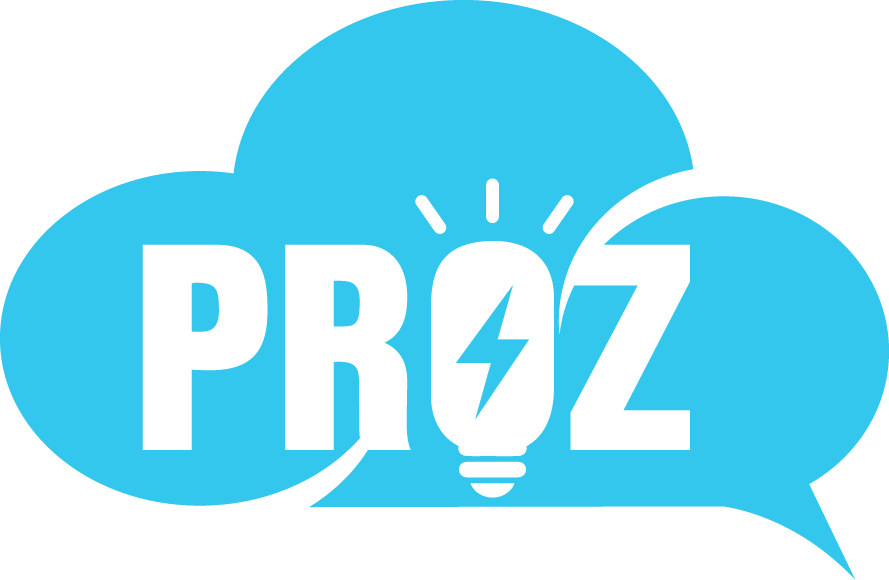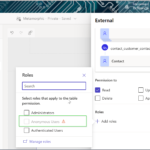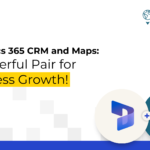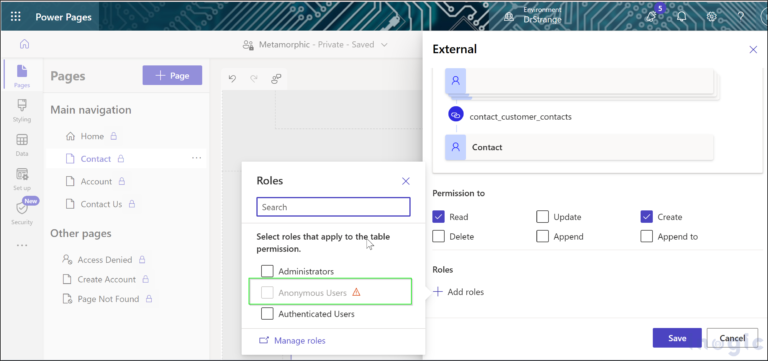Companies have so many ways to connect with customers now, but it’s still hard to beat a well-written, well-timed email. In our latest research, 93% of people surveyed said that email was their primary channel for engaging with companies. Competition for eyeballs and clicks are at a premium, so your email marketing strategy needs to constantly evolve to keep up.
However, many companies still use generic tactics that haven’t been relevant in years — leading to disinterested customers frantically searching for the unsubscribe button. If your metrics are suffering and you’re not seeing the results you need, maybe it’s time to review your email marketing strategy and see where you can improve.
In this article, we’ll cover the basics of email marketing and ways you can use automation and AI to optimize your approach. You’ll learn how to create and send unforgettable emails for your customers and prospects with these tips.
50 ways to send better emails
How do you get readers to click and read your emails? The answer is easy if you take it logically, with these best practices.


What is email marketing and why does it matter?
Email marketing is a form of direct marketing that uses messages to promote products or services, send thought leadership pieces, or connect with their audience in other ways. A thoughtful email marketing strategy provides customers with interesting and valuable information to make smarter purchasing decisions.
Simple, straightforward messages will position your company as helpful rather than invasive or salesy. As the email campaign journey advances, an authentic connection of trust develops between your brand and your customers. Email marketing helps you drive conversions and revenue by delivering quality information that helps your customers achieve their goals.
As the quality and speed of digital experiences exploded with the rise of social media and mobile apps, email marketers are now using tools like AI and automation to deliver better messages at the right time.
What impact have marketing automation and AI had on email marketing?
Marketing automation has helped businesses shift away from traditional email tactics — generic messages sent to lengthy subscriber lists — and get more personal. More comprehensive data collection and management now make it possible for emails to focus on the specific wants and needs of each individual customer. And that personalization is very powerful.
You can use AI within marketing automation platforms to enhance their capabilities and provide more targeted and personalized experiences.
Marketing automation in email focuses on automating workflows, nurturing leads, and optimizing campaign management. AI uses advanced algorithms and machine learning to analyze data and make data-driven marketing decisions. It enhances personalization, optimizes subject lines, generates dynamic content, determines optimal send times, and provides predictive analytics.
The combination of marketing automation and marketing AI results in highly targeted and effective email marketing campaigns.
Get articles about marketing selected just for you, in your inbox
What are the benefits of automation in email marketing?
Good email marketing wouldn’t be possible without marketing automation platforms. A marketing automation platform helps to scale lead management activities, such as coordinating and managing marketing campaigns and nurturing and scoring leads to determine engagement.
Marketing automation is the engine that makes segmentation and personalization possible at scale. Today’s marketing automation platforms allow businesses to segment audiences by a number of identifiers such as age, location, interests, and purchasing history. This approach to email marketing means customers receive highly targeted and relevant messages.
As a result, businesses are more likely to see higher engagement and more conversions from their emails.
This is particularly true if your audience has opted in to your email outreach — which simply means they’re interested in your business and your products or services. That presents an opportunity for your brand to capitalize on and develop trust with audiences which lead to stronger relationships and better customer experiences.
One of the largest benefits of email marketing is the capability to personalize messaging. Email personalization can come in many forms, such as using recipients’ first names or recommending products based on their purchase history. The capabilities are improving beyond that fast.
AI uses advanced algorithms and machine learning to analyze vast amounts of data and deliver highly tailored and relevant email content to individual recipients. With the ability to identify persona patterns, trends, and behaviors, marketers can deliver highly relevant and individualized content. This results in increased engagement, improved open and click-through rates, and ultimately, better conversion and customer satisfaction.
With a flexible and customizable email marketing strategy, you can achieve a number of marketing and sales goals, including:
- Building customer relationships
- Boosting brand awareness
- Generating and nurturing leads
- Marketing products and services
- Promoting content and useful resources
Is email marketing easy?
The short answer is that yes, it can be — if you set it up properly.
Optimizing your email marketing campaigns can take time. But starting with a personalized strategy and using tools like marketing automation and AI make the process straightforward. It’s all about laying a foundation, listening to the data, and making adjustments as you go.
For starters, build your foundational strategy around segmentation, personalization, and automation. Segmentation and personalization allow you to reach individual customers with highly targeted content that’s meaningful to them. That means they’re more likely to engage with the emails and, in turn, your brand.
5 email marketing best practices
Here’s a high-level look at some best practices of email marketing.
1. Craft marketing emails that people will engage with
Emails are an art and a science, and efficiency is key for success. It’s important to not only get into the inbox but also to get them to engage with your emails. From eye-catching subject lines to the power of dynamic content, email marketing is equal parts what you say and how you say it.
2. Follow legal compliance guidelines
Adhering to the laws and guidelines related to email communications will keep you out of trouble, out of spam filters — and into customers’ inboxes. Following data protection and anti-spam standards will help you ensure the safety, security, and privacy of emails sent and received. It’s also just good business to make sure you’re not spamming potential customers, or invading their privacy in any way.
3. Improve email deliverability
With all the automation happening for emails, be sure your connections are linked properly and all information is inputted correctly to ensure deliverability. Don’t let your emails get lost in cyberspace. Make sure to properly address your emails, and take steps to ensure that they don’t bounce back or wind up in spam filters by researching what is best for your industry.
4. Acquire new subscribers
Email marketing is all about reaching the masses and building campaigns to reach more and more people. There are so many ways to build your subscriber list, but the first step is to ask them! Ask them to share, accept your newsletter invitation, or simply don’t unsubscribe. Make sure you activate your outreach channels, online and in person.
5. Engage your subscribers
Acquiring email subscribers is just the start. Opt-in incentives, coupons and offers, curated content, and personalized messaging are all proven ways to keep subscribers engaged. Craft an engaging drip campaign that keeps your potential customers coming back for more by providing value and connection.
Build your own personalized journeys
See how you can use AI-infused tools to create data-powered customer journeys across every channel.



What are the costs involved with email marketing?
The cost of email marketing depends on the size of your business, the size of your audience, and the number of emails you send each month. Those costs will fluctuate for your business, as you move in and out of busy times of the year, launch new products and services, and much more.
That said, the good news is twofold:
- One, it doesn’t have to cost much to get started with email marketing, especially if you do it in-house. An email marketing agency costs about $400 to $600 a month for a small business and anywhere from $2,000 to $12,000 for large businesses.
- Two, the return on investment for email marketing is quite high. Industry experts put the ROI of email marketing at $36 for every dollar spent, on average. That number climbs even higher for certain industries, like retail and e-commerce.
List of cost considerations
When considering the cost of email marketing, you’ll want to break it down into two main buckets — technology and labor:
- Technology costs include software, email service provider, and internet service provider.
- Labor costs include writing, design, and campaign management.
Depending on the size of your business and complexity of your email marketing needs, you may be able to absorb some of these costs into preexisting budget items. For instance, most businesses are already paying for internet and email service. If you have graphic designers in-house, you likely already have the software needed to design images for email campaigns.
The takeaway is clear, however: the ROI for email marketing is well worth it.
Types of email marketing
Experts often point to four types of emails most commonly used in email marketing. The exact names and descriptions will vary, but organizing these marketing emails into types is helpful in understanding how to build campaigns.
Pro tip: Track every email that you send for continuous improvement. Let’s dig in.
1. Newsletters
Newsletters are one of the most common types of marketing emails. An email newsletter (or an e-newsletter) is an email that is sent to your subscribers regularly to keep them informed about the latest news and updates about your product or brand. Depending on your industry, you can send them on a weekly or monthly basis.
Newsletters that show up regularly in subscriber inboxes are a great way to keep your brand top of mind for customers and prospects alike. Successful newsletters often deliver a mix of content, including material on thought leadership, how-tos, and new product and service announcements. There are many benefits to newsletters, including:
- Building and strengthening relationships with subscribers
- Increasing brand engagement
- Maintaining customer retention
- Building customer loyalty
In fact, 31% of marketers say email newsletters are the best way to nurture B2B leads.
2. Promotional emails
Another commonly seen type of marketing email, promotional emails are used to make direct offers to your email list. Offers can range from discounted pricing on specific products to promotional content for a product or service.
New product announcements, brand news, white papers, and webinars are all examples of content typically found in promotional emails. When it comes to driving purchases, email accounted for 19.8% of all transactions, trailing only paid search (19.9%) and organic traffic (21.8%) among digital channels. It’s no wonder promotional emails are so popular — they work!
3. Relational emails
Relational emails are designed to (surprise, surprise) build relationships with prospects and customers by adding value upfront. That value comes in the form of free content and information, such as subscriber welcomes, blog articles, surveys, social updates, and more.
The more engaging you can make these relational emails, the more connection you will build with your potential or current customers. In fact, newsletters are often categorized as relational emails, though we think them significant enough to warrant a category of their own.
4. Transactional emails
A transactional email is an email that is sent to a prospect following a commercial transaction or specific action performed by that person, such as a follow-up to a subscribe click, a purchase in your online store, or a password reset request.
Each transactional email requires the recipient to take action and is meant to further the potential or current customer along their journey with the brand. Personalization is key for these emails as it is a specific action they are following to connect with you.
5. Interactive emails
Whatever types of emails you’re sending, it’s well worth looking into adding interactive components to your messages.
Interactive emails provide the web-like functionality necessary for recipients to take actions within their inbox. This means customers have the ability to add items to their cart, book a hotel room, watch a video, and more without leaving the body of the email.
The main benefit of including interactive elements in your emails is a boost in engagement. Interactive content gives your customers something to do versus just reading an email. Visual and interactive elements can even lead to a 300% increase in click rates.
By using interactive emails, you have the opportunity to update the email in real-time, even after it’s been sent. You can also include formfills (a software program that automatically fills forms in the user interface) in the body of the email. These options ensure your emails are providing the most recent information and giving customers a chance to get even more personalized content from you.
Examples of interactive emails include options for:
- Booking an appointment via a form
- Seeing up-to-date product information in a shopping cart
- Quizzes, polls, and surveys about interests or experiences
Trending Articles
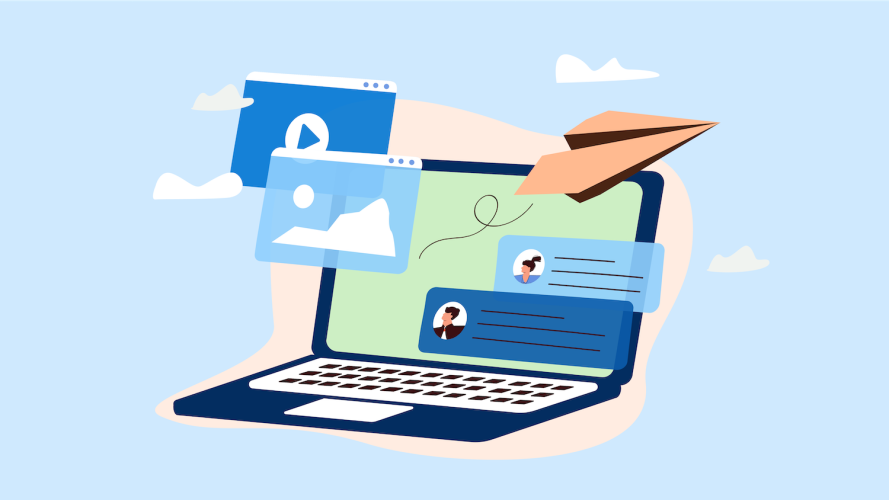
3 Ways Generative AI Will Help Marketers Connect With Customers
3 min read
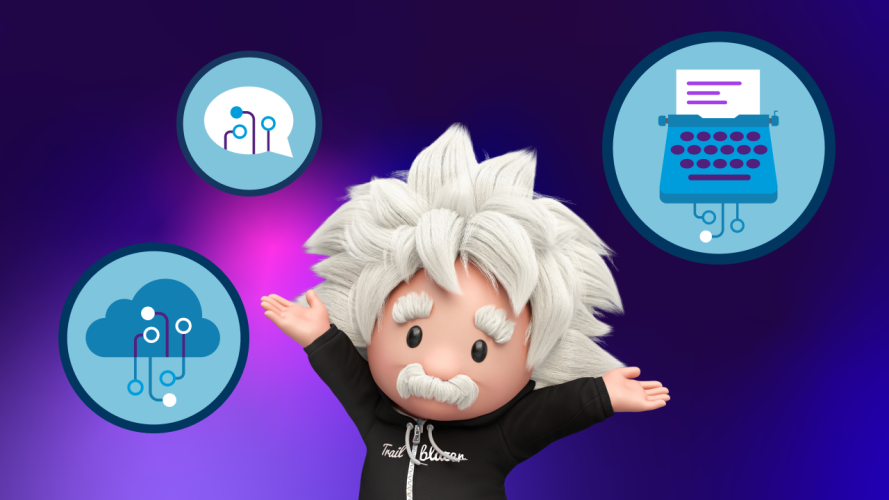
Learn AI Skills on Trailhead
6 min read
A great email marketing tool gives you the power to run email campaigns from start to finish and analyze the results to make the next campaign even better. With the right tool, you can handle everything from soup to nuts:
- Writing copy and designing templates for email messages
- Creating dynamic, personalized content to wow your audience
- Acquiring subscribers and managing leads with CRM integration
- Segmenting leads and running personalized drip-and-nurture campaigns
- Tracking analytics and optimizing campaigns in real time
How to get started with email marketing
Now that we’ve covered the different types of email campaigns you can launch, here’s how you can start an email marketing program in your company.
1. Know your business goals for email marketing
First things first: Define your business goals. Knowing what you need to accomplish with your emails will help you hone in on the tools and features you need in an email marketing tool.
2. Know what emails to send
Now that you know the different types, you can decide what is best for your brand. From newsletters to interactive, transactional messages, there are multiple kinds of marketing emails you can send. Make sure the tool you consider supports the easy design, distribution, and analytics tracking of your preferred formats.
3. Know what connects emails to customer data
Data is the gateway to scalability. Choosing an email marketing tool that integrates with your customer data system makes it easier to send emails with dynamic content, run automated drip-and-nurture campaigns, and so much more. Email tools that integrate with CRM systems, and understand metrics like open rates, click-through rates, and more open the door to advanced functionality and scalability.
4. Know what integrates email marketing to your business tools
Once you start growing subscriber lists and collecting analytics data on campaign performance, you’ll want to share that information across your organization. Team collaboration is key to scaling your email marketing campaign to new heights.
5. Know what tools your employees can use easily
The best email marketing tool in the world won’t do your business much good if it’s too complicated to use. Look for a tool that’s user-friendly and supported by solid documentation and support. Find a tool that offers a host of self-service support options to help you find the answers you need, on demand.
Start sending better emails today
Want to grow and engage your audience through email? Check out the interactive elements available to you within Marketing Cloud and start sending emails your customers will love.



